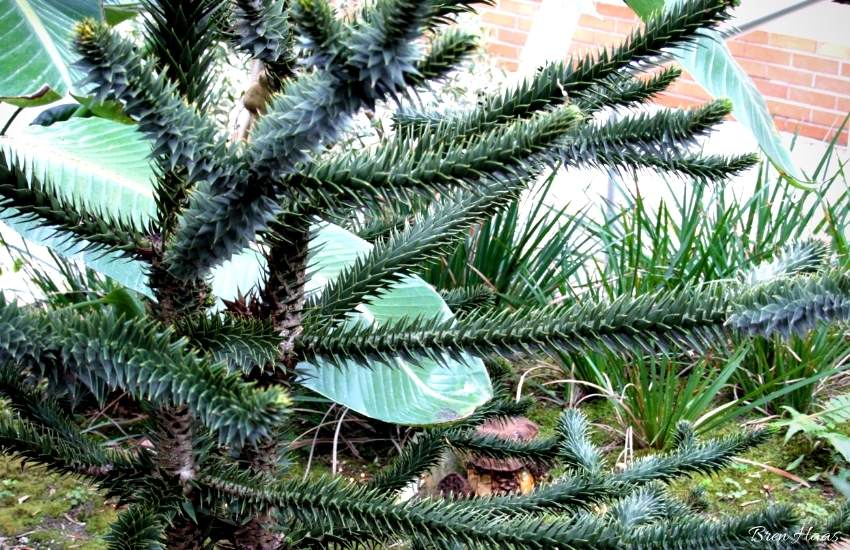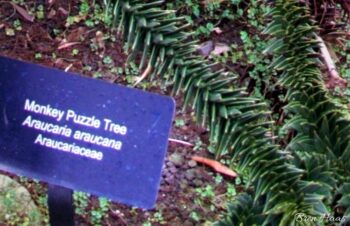A few photos of the tree from my collection
Debating if I should share this but the plant or tree is just too cool to not. Have you heard of a Monkey Puzzle Tree? In this post I share a few photos and some fun facts I found after coming across my long lost collection of images past.
Is it a Succulent or Conifer?

At first glance, I really thought it was a succulent tree. I don’t remember touching it at the conservatory but that was because I was so busy snapping hundreds of photos. Thank goodness I had a legible view of the professional tag that the conservatory had on each plant.
About the Monkey Puzzle Tree
Otherwise known as the Araucaria Araucana or the Monkey puzzle tree, monkey tail tree, or Chilean pine; Whatever you call it … it is a conifer.
Conifers
They are cone-bearing seed plants, a subset of gymnosperms. All extant conifers are perennial woody plants with secondary growth. You can find more information about this Monkey Puzzle Tree on the Conifer Society website.

How did it get its name?
The name comes from its early cultivation based in the UK in about 1850. The story goes that someone made the remark “it would puzzle a monkey to climb that”. The tree didn’t have a common name at the time so “monkey puzzler” or ” Monkey Puzzle Tree” it was! I think that is a cute story and it is kind of how I name my plants.
Hardy to USDA Zone 8 — cold hardiness limit between 10 to 20ºF (-12.1°C to -6.7°C).
Monkey Puzzle Tree Description

At first glance, you wouldn’t imagine this species will grow up to 130 feet. The trunk pictured above can grow to 7 feet in diameter. A few more interesting details about the characteristics of the trees are the branches grow horizontally with thick, tough scale-like leaves. They look like succulents at first glance to me.
It is usually dioecious, with the male and female cones on separate trees. Occasional individuals bear cones of both sexes but it can take up to 30-40 years before producing seeds. I read on the Conifer Society site that once the tree is established it can live up to 1,000 years. This species is listed in the CITES Appendix I as an endangered species.

This tree was spotted at the Matthaei Botanical Garden in Michigan and I am so thankful I got a photo of the tag!
Let’s Connect
I would love to hear about unusual plants you have spotted while out and about. Be sure to comment on my site or find me on social media. Links to my @brenhaas network are provided here.
Happy Garden Exploring,











